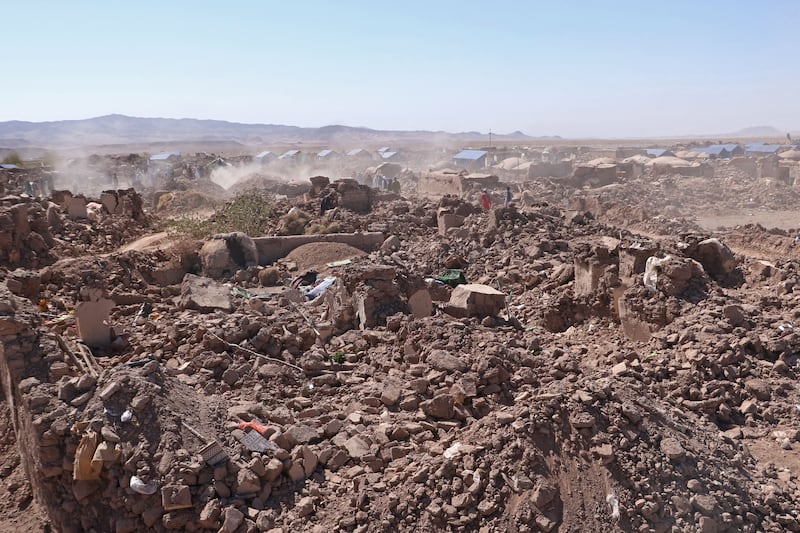Afghan rescue workers scrambled to pull survivors and bodies from beneath the rubble on Monday, two days after the deadliest earthquakes in years hit the northwestern city of Herat and surrounding villages.
The Taliban administration said at least 2,400 people had been killed and many more injured in the quakes, which were among the world’s deadliest this year after earthquakes in Turkey and Syria, in which about 50,000 people were killed.
Periodic aftershocks continued to shake the affected areas on Monday, officials said, forcing already scared people out of their homes.
Neighbours Pakistan and Iran have offered to send rescue workers and humanitarian aid, while China’s Red Cross Society offered cash relief. A technical team from Iran has arrived in the area, Mullah Janan Sayeeq, spokesman for the ministry of disaster management, said during a press conference. “I ask all countries, to help us in this crucial time,” he said.
READ MORE
He said people were trapped under rubble in two villages and teams were working to free them.
The spokesman for Herat’s governor, Nissar Ahmad Elyias, said more than a dozen villages around Herat had been hit.
Many buildings in Herat city were relatively unaffected, but the medieval minarets of its famous mosques sustained some damage, photographs on social media showed.
“Many of our family members have been martyred, including one of my sons, and my other son is also injured,” Herat resident Mir Ahmed said at a hospital that was treating survivors. “Most of the people are under the rubble.”
Hemmed in by mountains, Afghanistan has a history of strong earthquakes, many in the rugged Hindu Kush region bordering Pakistan.
Death tolls often rise when information comes in from more remote parts of a country where decades of war have left infrastructure in a shambles, and relief and rescue operations difficult to organise.
In a statement late on Sunday, the UN Humanitarian Office put the death toll from the quakes at 1,023, with an additional 1,663 people injured, and more than 500 missing. It said all the homes in the Zindajan district of Herat had been destroyed.
Afghanistan’s healthcare system, reliant almost entirely on foreign aid, has faced crippling cuts in the two years since the Taliban took over and much international assistance, which had formed the backbone of the economy, was halted.
Diplomats and aid officials say concerns over Taliban restrictions on women and competing global humanitarian crises are causing donors to pull back on financial support. The Islamist government has ordered most Afghan female aid staff not to work, although with exemptions in health and education.

Mullah Sayeeq, the disaster management department spokesman, said that aside from those killed and injured, thousands had been affected with 20 villages – made up of more than 1,900 houses of about 10,000 people – destroyed.
Many survivors remained under the open sky as medical and food aid reached them.
The World Health Organisation’s head of emergency response, Alaa AbouZeid, said there was a huge need for shelter as temperatures drop.
“We have cases who receive treatment and should go back home, but, unfortunately, they do not have [a home to go back to],” he said, adding that people were even afraid to enter partially damaged homes.
A majority of the casualties were women and children, Mr AbouZeid said, given that at the time of the quake, 11 in the morning, most men were away from home. – Reuters













